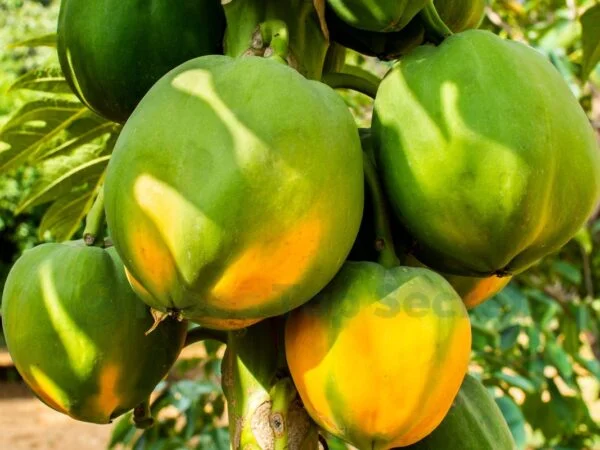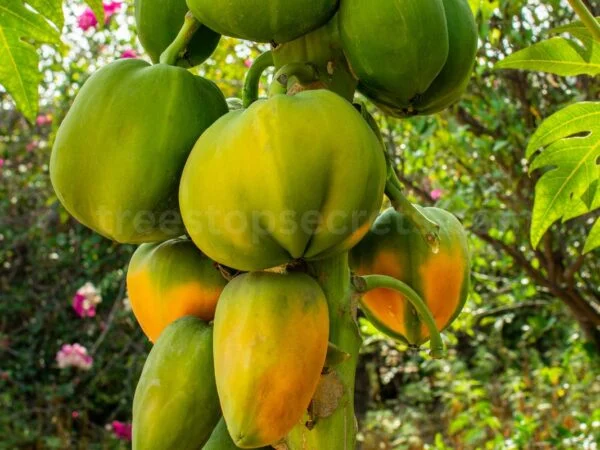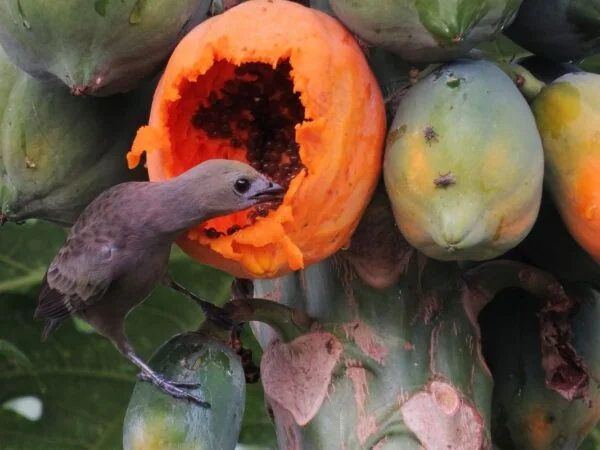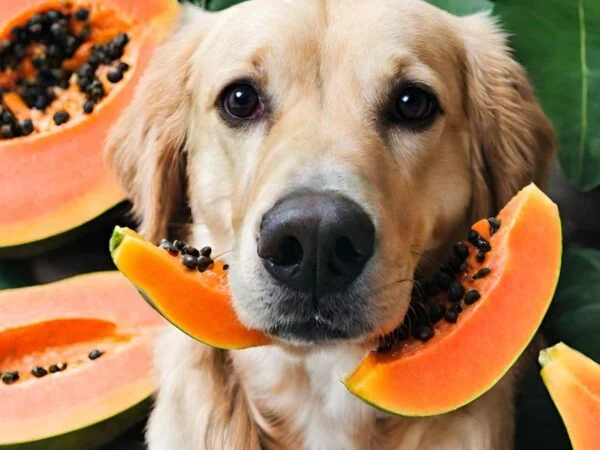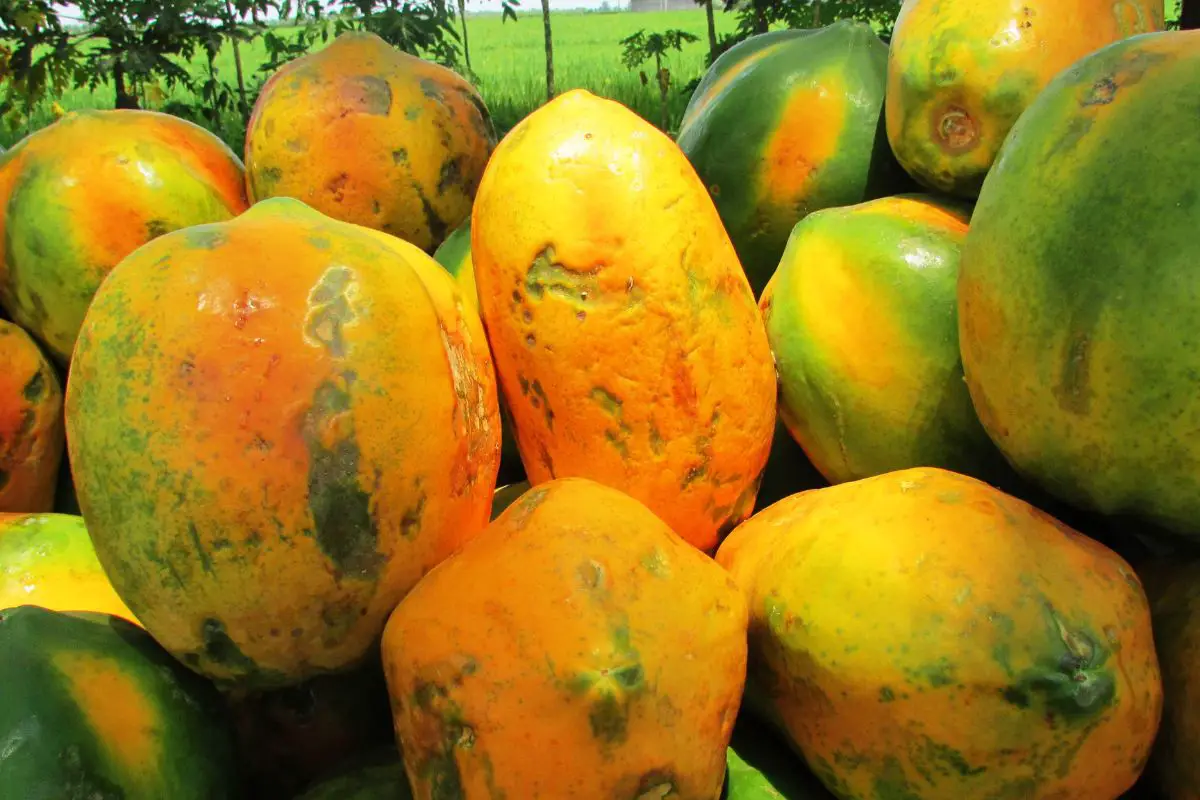
Papayas, avocados, and melon, those tropical fruits with their vibrant orange flesh and sweet flavor, are a delicious treat. But how do you know when a green papaya is ripe and ready to eat? Are you looking for melon recipes or maybe some avocado dishes? The ripening process is essential for the sweet flavor and texture of papayas. It transforms green papayas into ripe ones with orange flesh, preventing them from rotting. Understanding the signs of ripeness will ensure that you enjoy your papaya at its peak. In this blog post, we will discuss the key indicators of ripeness for papayas.
Determining whether a papaya is ripe involves considering various factors, as outlined in this blog post. From the color of the skin to the firmness of the fruit, these indicators can help you avoid biting into an unripe or overripe papaya in this blog post. Nobody wants to experience the disappointment of sinking their teeth into a mushy or tasteless fruit.
We'll explore different ways to assess ripeness and share tips for selecting the perfect papaya every time.
Visual Cues: Yellow and Soft Papaya
To determine when a papaya is ripe, pay close attention to its visual cues and texture. Here are some key indicators to look out for:
Yellow Skin with No Green Patches
A ripe papaya will have vibrant yellow skin without any traces of green patches. The color change signifies that the fruit has ripened fully and is ready to be enjoyed. So, keep an eye out for that sunny yellow hue!
Yielding to Gentle Pressure
When you gently press your finger against the skin of a ripe papaya, it should yield slightly to the pressure. This means that the fruit is soft but not overly mushy or mealy. If it feels too firm, it may still need some time to ripen further. On the other hand, if it feels excessively soft or mushy, it might be overripe.
Avoid Bruises or Blemishes
While examining a papaya for ripeness, make sure to check its skin for any bruises or blemishes. These marks can indicate damage or spoilage within the fruit and may affect its taste and texture. Opt for papayas with smooth and unblemished skin to ensure you get the best eating experience.
Overly Soft or Mushy Papayas
While a slightly soft papaya is desirable, be cautious of fruits that feel excessively soft or mushy when touched. These could be signs of overripeness or decay, which can result in an unpleasant taste and texture. It's best to avoid such papayas as they may not provide an enjoyable eating experience.
By paying attention to these visual cues and texture indicators, you'll be able to identify a perfectly ripe papaya every time! Remember: yellow skin with no green patches, yielding gently to pressure, avoiding bruises or blemishes on the skin, and steering clear of overly soft or mushy fruits are all key factors to keep in mind.
Now that you know how to tell when a papaya is ripe, you can confidently select the perfect one for your next tropical fruit adventure. So grab that spoon and get ready to indulge in a delicious papaya salad or enjoy a juicy piece of this mouthwatering fruit ASAP!
Color Check: Examining the Fruit's Hue
One of the key visual cues to look for is the color of its skin. By examining the fruit's hue, you can get a good idea of whether it is ripe and ready to eat or still in its unripe state.
Look for a uniform yellow color on the entire surface of the papaya.
A ripe papaya will have a vibrant yellow color that is consistent throughout its skin. This uniformity indicates that the fruit has reached its peak ripeness and is ready to be enjoyed. On the other hand, if you notice any green or partially green areas on the papaya's skin, it suggests that it is not yet fully ripe.
Green or partially green areas indicate an unripe fruit.
If you come across patches of green on a papaya, it means that those areas are still in their unripe stage. These parts may be firm and lack sweetness compared to the rest of the fruit. It's best to avoid consuming these sections as they might not provide an enjoyable eating experience.
Dark spots or black patches may suggest spoilage rather than ripeness.
While dark spots or black patches may seem like indicators of ripeness, they often signify spoilage rather than optimal ripeness. These blemishes can arise from bruising or damage during transportation or storage. If you encounter such spots on a papaya, it's advisable to inspect further to ensure that they haven't affected the overall quality of the fruit.
The intensity of yellow can vary depending on different varieties.
It's important to note that while a uniform yellow color generally signifies ripeness, different varieties of papayas may exhibit variations in their shade and intensity of yellow. Some varieties display a bright golden-yellow hue when fully ripe, while others have a more subtle pale-yellow tone. Familiarizing yourself with specific varieties can help you better gauge the ripeness based on their unique characteristics.
Touch Test: Feeling for Perfect Ripeness
To determine if a papaya is ripe and ready to be enjoyed, you can rely on the sense of touch. By gently pressing your fingers against the skin of the fruit, you can assess its firmness and texture.
An underripe papaya will feel hard when pressed. It won't yield much to the touch and may even feel slightly rigid. On the other hand, an overripe papaya will be too soft and mushy. You might notice that it gives way excessively when pressed, almost like it's collapsing under your fingertips.
When testing for ripeness, aim for a papaya that has a slight give when you press it gently. Ripe papayas should have a subtle bounce-back effect. Imagine softly squeezing a stress ball – there should be some resistance but also a bit of springiness.
Pros
- The touch test is quick and easy.
- It allows you to assess the fruit's ripeness without cutting into it.
- You can perform this test using just your hands.
Cons
- It requires some practice to differentiate between different levels of firmness.
- Overly ripe fruits may appear fine on the outside but have undesirable texture or taste inside.
If the papaya feels excessively firm or doesn't yield at all when pressed, it is likely not yet ripe enough to enjoy. Conversely, if it feels overly soft or mushy, it may be past its prime and no longer suitable for consumption.
Remember that while the touch test provides valuable information about ripeness, it does not provide insight into flavor. A ripe papaya should have a sweet aroma and offer a burst of delicious flavor when eaten.
Once you've determined that your papaya is perfectly ripe based on its texture and give, you can proceed to enjoy this tropical delight in various ways. Whether you prefer slicing it up as a refreshing snack or adding it to smoothies or fruit salads, a ripe papaya is sure to bring a touch of tropical sweetness to your taste buds.
Controlling Ripening: Slowing or Speeding Up Process
To ensure that your papayas ripen at the desired pace, you can take control of the ripening process. By following a few simple steps, you can either slow down or speed up the ripening of your papayas.
Slowing Down Ripening
If you have unripe papayas and want to slow down their ripening process, there are a couple of things you can do:
- Store in a Cool Place: Find a cool spot in your kitchen or pantry away from direct sunlight. The cooler temperature will help slow down the ripening process.
- Avoid Exposure to Ethylene Gas: Ethylene gas is naturally produced by fruits as they ripen and can accelerate the ripening process of other fruits nearby. Keep unripe papayas away from ethylene-producing fruits like bananas and apples.
To further control the exposure to ethylene gas, you can try using a paper bag:
- Place unripe papayas inside a paper bag.
- Seal the bag loosely to trap any ethylene gas produced by the fruit.
- This method helps create an environment with higher levels of ethylene gas, which speeds up the ripening process.
Speeding Up Ripening
On the other hand, if you have unripe papayas and want them to ripen faster, here's what you can do:
- Find a Warm Spot: Locate a warm area in your home, such as near a window sill where sunlight streams in or on top of your refrigerator. The warmth will help accelerate the natural ripening process.
- Use Ripe Fruits: Another effective method is to place unripe papayas in a brown paper bag along with another ripe fruit like banana or apple. Ripe fruits produce higher levels of ethylene gas, which stimulates ripening in other fruits.
By monitoring temperature and exposure to ethylene gas, you can have better control over how quickly your papayas ripen. Remember to check on them regularly to ensure they reach the desired level of ripeness.
The ripening process of papayas is influenced by various factors, including temperature, exposure to ethylene gas, and the presence of other ripe fruits nearby. By manipulating these factors, you can tailor the ripening process to suit your preferences.
Enjoying Ripe Papaya: Tips for Home Consumption
To fully enjoy a ripe papaya, there are a few simple steps you can follow. Let's dive in and explore how to tell when a papaya is ripe and how to savor its deliciousness!
Cut the Papaya Lengthwise and Scoop Out the Seeds
Start by cutting the papaya lengthwise with a sharp knife. Once cut, you'll notice the center filled with seeds. Using a spoon, gently scoop out all the seeds from both halves of the fruit. The seeds are not edible but can be saved for planting if desired.
Use a Spoon to Separate the Flesh from the Skin
After removing the seeds, take a spoon and carefully separate the flesh of the papaya from its skin. The flesh should easily detach from the skin due to ripeness. Make sure to remove any remaining white pith as it may have a bitter taste.
Ripe Papayas Can Be Eaten as Is or Added to Fruit Salads
Now that you have separated the ripe papaya flesh, you have various options for enjoying this tropical delight. One simple way is to eat it as is! Grab a spoon and dig into its juicy sweetness right away.
If you're feeling more adventurous, consider adding ripe papaya slices or cubes to your favorite fruit salad recipe. Its vibrant color and unique flavor will add a delightful twist to your salad bowl.
Blend Ripe Papayas into Refreshing Smoothies
Another fantastic way to enjoy ripe papayas is by blending them into delicious smoothies. Simply combine chopped papaya pieces with other fruits like bananas, strawberries, or mangoes in a blender. Add some ice cubes and blend until smooth and creamy.
The result? A refreshing tropical smoothie bursting with flavors that will transport you straight to an island paradise.
Enhance Flavor with Lime Juice or Sprinkle of Chili Powder
To take your ripe papaya experience to the next level, try enhancing its flavor with a squeeze of fresh lime juice. The tanginess of the lime perfectly complements the sweet tropical taste of the papaya.
For those who enjoy a little kick, sprinkle some chili powder on top of your ripe papaya slices or cubes. The combination of sweet and spicy creates a tantalizing flavor explosion that will leave your taste buds craving for more.
Buying Tips: Optimal Ripeness for Purchasing
There are a few key indicators to keep in mind. By paying attention to these factors, you can ensure that you bring home a delicious and perfectly ripe fruit. Here are some tips on how to tell when a papaya is ripe:
Choose papayas that are fully yellow but still firm when purchasing for immediate consumption.
A ripe papaya should have a vibrant yellow color all over its skin. However, it's important to note that overly soft or mushy fruit may be overripe and not as enjoyable to eat. Look for papayas that have a slight give when gently pressed, indicating ripeness without being too soft.
If you prefer a ripe fruit, look for ones with slightly soft spots near the stem end.
For those who enjoy their papayas on the riper side, seek out fruits with small areas of softness near the stem end. These spots indicate that the fruit is nearing its peak ripeness and will be sweeter and juicier in flavor. Be sure to avoid any papayas with large or mushy spots as they may be spoiled or past their prime.
Avoid papayas with wrinkled skin or signs of mold.
When selecting a papaya, take note of its overall appearance. Avoid fruits with wrinkled or shriveled skin as this can indicate dehydration and loss of freshness. Steer clear of any signs of mold growth which can spoil the entire fruit.
Smell the bottom end of the fruit; it should have a sweet aroma.
One useful trick to determine if a papaya is ripe is by smelling it. Take a whiff at the bottom end where the stem was attached - if it emits a sweet fragrance, then chances are it's ready to be enjoyed! A pleasant aroma indicates optimal ripeness and flavor.
By following these simple guidelines, you can confidently select a ripe papaya that is perfect for your needs. Whether you prefer a slightly firm fruit or one that is fully ripe and bursting with sweetness, paying attention to the color, texture, and smell will help you make the best choice.
Remember, if you're in a hurry and need a papaya for immediate consumption, opt for one that is fully yellow but still firm. On the other hand, if you have time to let it ripen further at home, choose a papaya with slightly soft spots near the stem end. Avoid any signs of mold or wrinkled skin as these are indicators of an overripe or spoiled fruit.
Now that we've covered how to tell when a papaya is ripe for purchasing let's move on to the next section which will focus on storing and handling tips to ensure your papayas stay fresh and delicious.
Mastering Identifying Ripe Papayas
Congratulations! By now, you are well-equipped to become a papaya connoisseur. Armed with the knowledge of visual cues, color checks, and touch tests, you can confidently determine when a papaya is ripe and ready to be enjoyed. Remember, a perfectly ripe papaya will have a vibrant yellow color, yield slightly to gentle pressure, and emit a sweet aroma. With practice, your intuition will grow sharper as you become attuned to the subtleties of this tropical fruit.
Now that you know how to identify ripe papayas, it's time to put your newfound skills into action. Head over to your local grocery store or farmer's market and select the perfect papaya for yourself. Experiment with different ripeness levels and savor the delightful flavors each stage has to offer. Don't forget to share your juicy discoveries with friends and family – they'll surely appreciate your expertise!
FAQs
How long does it take for a papaya to ripen?
Papayas typically take around 3-5 days to fully ripen at room temperature. However, this timeframe can vary depending on factors such as the initial ripeness of the fruit when purchased and ambient temperature conditions.
Can I speed up the ripening process?
Yes! If you want to accelerate the ripening process of an unripe papaya, place it in a paper bag along with a banana or apple. These fruits release ethylene gas which aids in speeding up ripening.
How do I slow down the ripening process?
To slow down the ripening process of a ripe papaya, refrigerate it promptly. The lower temperatures will help maintain its current level of ripeness for longer.
Are green papayas edible?
Green (unripe) papayas are commonly used in certain cuisines like Thai cuisine for dishes such as salads or curries. While they may not be as sweet as ripe papayas, they offer a unique and crisp texture.
Can I eat the seeds of a papaya?
Yes! Papaya seeds are edible and have a slightly peppery flavor. They can be used in various culinary preparations or even blended into smoothies for added nutritional benefits.
Image Source: Paid image from CANVA

